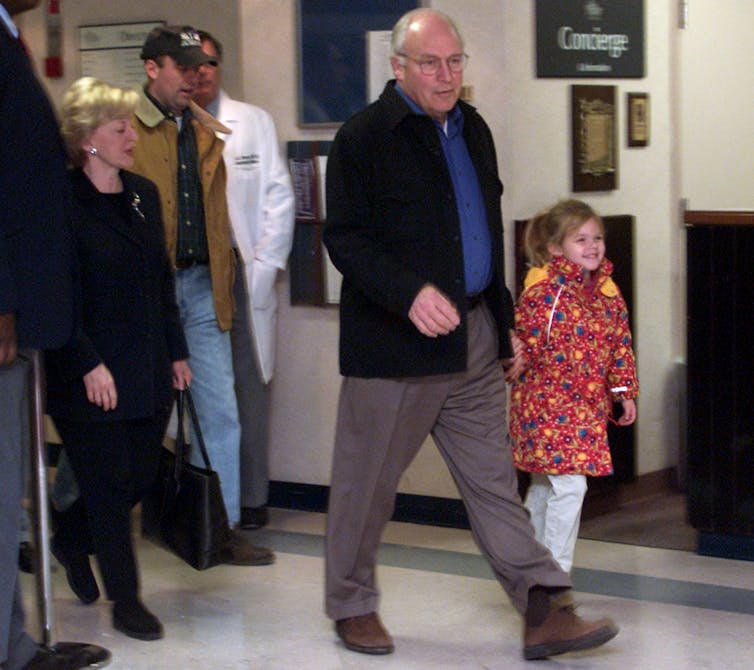Source: The Conversation – UK – By Karah Dring, Senior Lecturer in Exercise and Health, Nottingham Trent University

Attention deficit hyperactivity disorder (ADHD) is the most common disability diagnosis in children globally. It’s estimated to affect around 8% of children aged 3-12 years, and around 6% of teenagers aged 12-18 years.
ADHD can make school difficult for children – affecting their behaviour in class, their attendance and their academic performance. But research my colleagues and I conducted has shown why physical activity may be one way of helping children with ADHD to thrive in school.
To conduct our research, we had 27 children aged 9-11 years (all with ADHD) complete two trials.
The first trial involved a 30-minute exercise circuit that also engaged their brains. The exercise circuit involved several stations. For instance, at one station the children played “Simon Says,” while at another, they did a coordination task where they had to bounce and pass a basketball with alternating hands with a classmate.
The second trial acted as a control, so the children didn’t do any activity but instead rested in their seats in their classroom.
To determine whether the one-off exercise game supported the children with ADHD, they also completed three cognitive tests on a laptop. These were done before the exercise, immediately after the exercise and the morning after the exercise. The tests were also repeated at the same time of day during the rested control period for comparison.
The first cognitive test was the Stroop test, which measures a person’s ability to suppress an impulse. The second test was the Sternberg Paradigm, which measured short-term memory. The third was a visual search test, which measured perception (the process of organising and interpreting information).
Interestingly, the children with ADHD performed better on each of the cognitive tests following the exercise activity when compared with doing no exercise.
But while the children answered the questions accurately, it did take them slightly longer to do so. This is an important finding, given that children with ADHD typically struggle with impulsivity (those hasty acts that occur without thought). Showing that exercise can help these children to slow down and achieve more correct answers feels promising for supporting them in the school environment.
Another important finding from our study was that the benefits of the cognitively engaging exercise (which was performed in the afternoon) extended into the following morning. This is one of the first studies to show that the benefits of exercise in children with ADHD persist into the next day.
This was a small study and more research is needed. But it again feels promising that these benefits continue into the day after the exercise has taken place supporting both children and their teachers for an extended period.
Our study has also shown that it doesn’t take a lot of intense exercise to help children with ADHD in the classroom. The activity was short, simple and could easily be delivered by teachers during the school day.
Exercise and learning
Importantly, our study does not stand alone in showing that one-off bouts of exercise are beneficial for supporting children with ADHD.
Other studies have shown that games-based activities in particular tend to be more beneficial in improving cognitive outcomes in children with ADHD.

Master1305/ Shutterstock
For instance, a review we conducted revealed that physical activity which has a cognitive component has greater cognitive benefits for children with ADHD compared with longer-duration exercises (such as running and cycling).
That said, there are also benefits observed from doing longer bouts of exercise. For instance, research has shown that a one off bout of running or cycling for between 20-45 minutes at a moderate intensity also benefits inhibitory control and cognitive flexibility (defined as switching between thinking patterns and managing multiple concepts simultaneously).
But current evidence suggests that just 20 minutes of endurance exercise is sufficient to boost cognitive benefits in children with ADHD.
A growing body of evidence also suggests that not only can a one-off bout of exercise be useful, but that the benefits of movement can extend across several different domains of cognitive function – all of which tend to be impaired with ADHD. These include attention, inhibitory control (related to impulsivity) and cognitive flexibility.
This may all sound promising, but the physical activity levels of children with ADHD are a major concern. It has recently been reported that children with ADHD are 21% less likely to meet the physical activity guidelines than their peers.
Some of the barriers to physical activity for children with ADHD include low motivation, low self-efficacy (a belief in their ability) and difficulties managing big emotions in an environment that can feel overwhelming.
Much more research is needed to support children with ADHD to engage with exercise. But what is promising is the variety of exercises that can improve cognitive function in children with the condition – from endurance sports to mixed martial arts and games-based activities.
![]()
Karah Dring receives funding from The Waterloo Foundation to conduct some of the studies included in this article.
This work was supported by The Waterloo Foundation.
– ref. ADHD: even one bout of physical activity might help kids better learn in school – https://theconversation.com/adhd-even-one-bout-of-physical-activity-might-help-kids-better-learn-in-school-269315





















